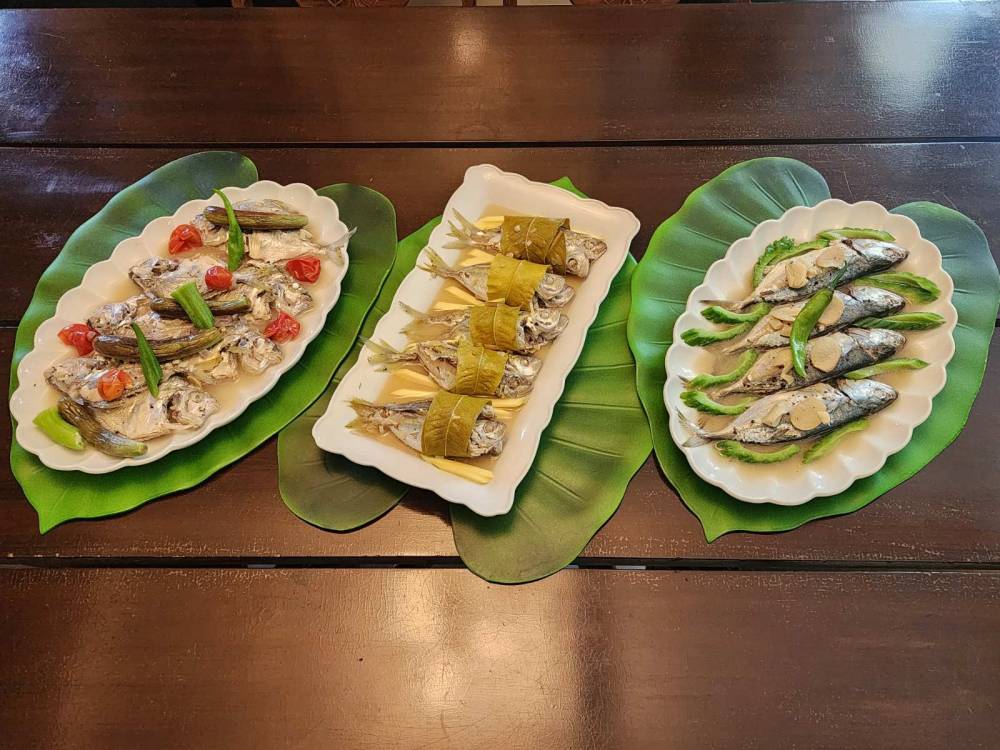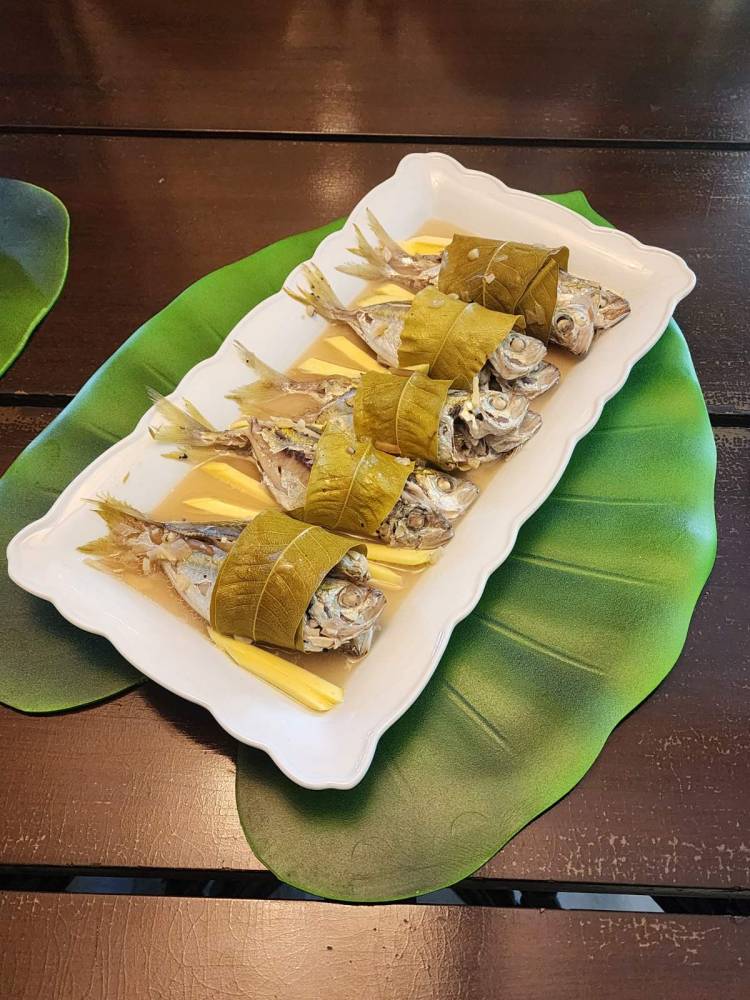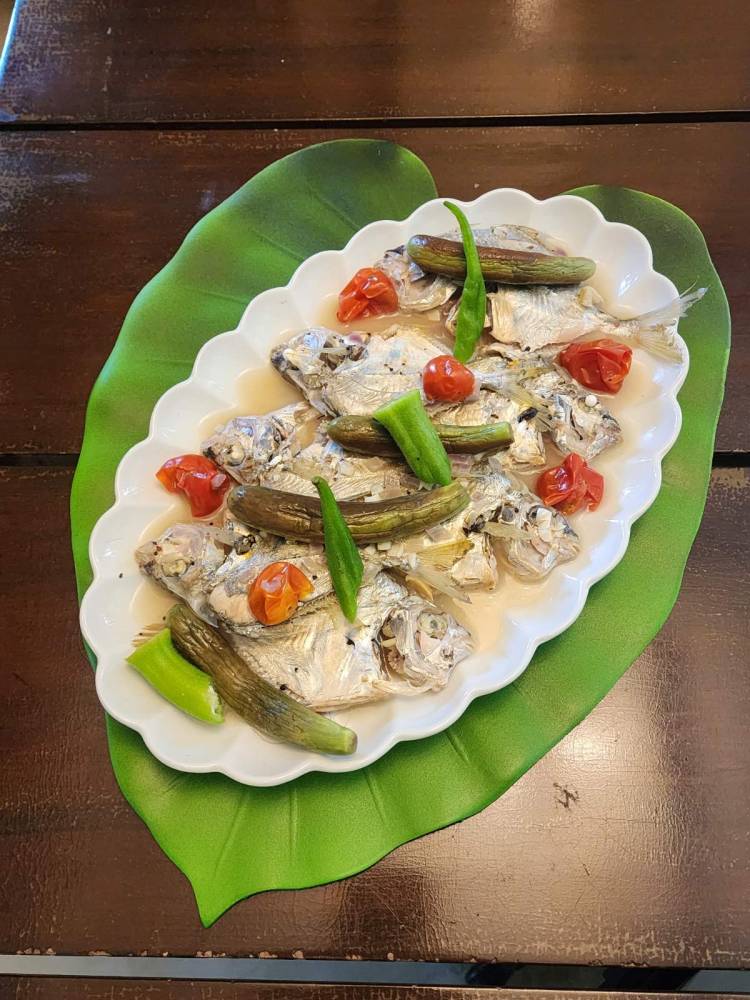‘Paksiw’ for the Lenten season

I finally found the time to pick up “Sangkap 2: Main Philippine Cooking Ingredients” which features winning stories from the Doreen Gamboa Fernandez Food Writing Award from 2018 to 2022.
The book, edited by Micky Fenix and Felice Prudente Sta. Maria, with recipes by Myrna Segismundo, is one I highly recommend.
The essays are educational and heartwarming. They elicit a sense of national pride and awe for our cuisine, culture, language, and traditions. The pieces, though many written from a personal perspective, speak to the collective, and mirror what makes us uniquely Filipino. The collection of stories is a reaffirmation that in many ways we truly are what we eat.

There are many captivating essays in the book, but there was one that caught my fancy. Perhaps it’s due to my quest to find season-appropriate stories.
I found the piece by Rosy Mina interesting for many reasons. It is, after all, Lent, and as such, fish takes center stage for Catholics who abstain from eating meat. Also, many don’t even know the names of our local fish varieties.
“What’s in a Name? When Filipino Fishes Go by Reduplication” is the essay I wish to share. Here are excerpts:

“A lot of Filipino words are marked by reduplication, a linguistics term referring to the exact (or almost exact) repetition of a root word, word stem, or the whole word. Whether they are traditional words like bababa, dada, gabi-gabi, ganga, saysay, and sisi, or colloquial terms such as gaga, eng-eng, wawa, and walwal, the reduplication game in Filipino is strong.
“Reduplication was inherited by the Filipino language from its Malayo-Polynesian roots. Such linguistic characteristic is evident in languages of nations in East Asia, the Pacific, and Southeast Asia. Aside from being present in Philippine vocabulary, reduplication is also common in Filipino names. There are celebrities nicknamed Zsa Zsa and Ai-Ai, and politicians called Junjun and Nene.
“The same can be said about Philippine fishes.”
Mina elaborates that based on research, there are over a dozen local fish that fall under the category.

16 fish
On the list, alongside some fun trivia on each species, are:
- Hasa-hasa, a short mackerel. Known locally as kabayas
- Red snapper, the maya-maya. Its bright red color makes it a standout in shallow reefs, while its delectable meat makes it a favorite.
- Named after Cebu’s native chieftain who became a hero during the Battle of Mactan against Spanish colonizers, the lapu-lapu or grouper is a pricey specialty, commonly cooked in light soy sauce or in a pickled fried fish recipe (escabeche). The lapu-lapu‘s other local name is an example of reduplication as well: bato-bato.
- Pla-pla is the name for large freshwater tilapia or St. Peter’s fish. For it to be pla-pla, the tilapia has to be more than 1 kg.
- The tiny yellowstripe scad or salay-salay is known for its yellow details in its tail and body.
- Sapsap, the slipmouth or ponyfish, is another small flat fish. Its other local name is laway-laway, most likely pertaining to its slimy body with small scales.
- The parrot fish is known as mol-mol or loro. Its consumption is being questioned because of its importance in preserving coral reefs
- A staple, its nickname just has two letters—GG, which is the short form of galunggong, known as the poor man’s fish, for being affordable. The mackerel scad, GG, is sometimes spelled as gigi.

Additionally, dagum-dagum is a seahorse, buan-buan is an Indo-Pacific tarpon, bidbid in English is Hawaiian ladyfish or 10-pounder, haol-haol has the English name sardines, lao-lao (or law-aw) is a deepbody sardinella, talang-talang or dorado has the English names dolphinfish and leather jacket, and bilong-bilong, which also goes by the name chabita, is a moonfish.
To complete her list of 16, Mina included our National Fish, the milkfish, known as bangus. She wrote: “Now, where in the world is the reduplication in bangus? Well, my research has revealed that the scientific name of bangus is Chanos chanos.”
Now, in the spirit of Lent, let us highlight the paksiw. Prepared with vinegar, the dish lasts without refrigeration. It was a cuaresma staple in the olden days and allowed families to do little to no cooking on Maundy Thursday and Good Friday, allowing them to focus on prayer and rituals instead.

Myrna Segismundo’s Paksiw
- 1 kg fresh fish heads, steaks or whole fish of choice
- 1 head garlic, peeled and crushed
- 1 inch ginger, peeled, sliced into 3 pieces
- 1 c vinegar (cane, palm or white)
- 3/4 c water
- 1 tsp black peppercorns, cracked
- 1 pc bittermelon (ampalaya), seeded, cut into 1- inch slices, optional
- 2 pcs eggplant, diagonally sliced into ½–inch rings
- 2 pcs finger pepper
- Fish sauce (patis) or salt, to taste
Clean fish.
Cut into stewing pieces.
In a pot, combine fish, garlic, ginger, vinegar, water, and pepper, and simmer. Add vegetables. Simmer until vegetables and fish are cooked. Season with fish sauce or salt.
www.reggieaspiras.com, @iamreggieaspiras on Instagram and Facebook


















